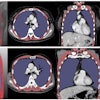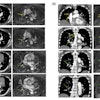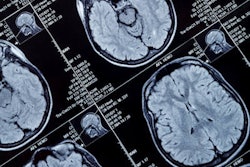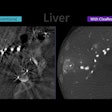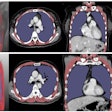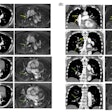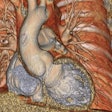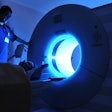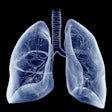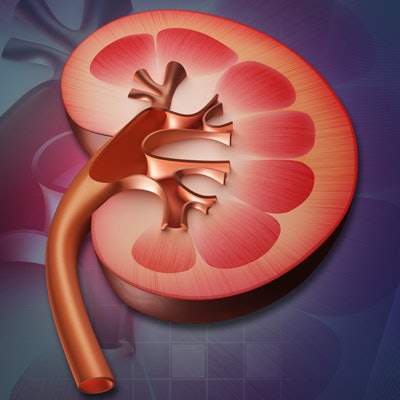
CT-guided renal ablation is a safe and effective alternative to nephrectomy in morbidly obese patients, according to a study published February 17 in the American Journal of Roentgenology.
The study results are good news for a population vulnerable to surgical complications, wrote a team led by Dr. Wenhui Zhou, PhD, of Stanford Medicine.
"Image-guided percutaneous ablation offers a direct and precise approach to eradicate renal tumors, often circumventing anatomic constraints imposed by increased habitus," the team wrote. "Furthermore, renal ablation has been widely adopted as a well-tolerated and safe procedure for patients who are poor surgical candidates."
Surgical treatment of renal cancer with nephrectomy is potentially more dangerous for obese patients compared to their counterparts of normal weight, Zhou's group noted. To evaluate the feasibility, outcomes, and survival of obese patients treated for kidney cancer with CT-guided thermal ablation, the authors conducted a study that included 107 patients who underwent this treatment between February 2005 and December 2017.
Patients were categorized into two cohorts: one of 34 morbidly obese people with (body mass index of ≥ 40 kg/m2) and another of 73 normal-weight patients (body mass indices ranging from 18.5-24.9 kg/m2). Zhou's team compared the two group's doses of anesthetic and radiation, as well as procedure time, residual disease, local recurrence, and adverse events.
The investigators found that the obese patients experienced longer procedures, higher sedative doses, and more radiation exposure than their normal-weight peers. However, treatment efficacy and local recurrence rates were similar between the two groups, and cancer-related outcomes, based on five years of imaging follow-up, were equivalent.
| Comparison of CT-guided thermal ablation for renal cancer in normal-weight and obese patients | |||
| Measure | Normal weight | Obese | p-value |
| Ablation time | 30 minutes | 33 minutes | 0.46 |
| Procedural time | 121 minutes | 152 minutes | 0.001 |
| Radiation dose | 182 mGy | 332 mGy | 0.001 |
| Anesthesia dose (fentanyl) | 236 µg | 350 µg | 0.002 |
| Outcomes | |||
| Major complication | 4% | 9% | 0.15 |
| Minor complication | 33% | 32% | >0.99 |
| Technique efficacy | 90% | 89% | 0.81 |
| Locally recurrent disease | 8% | 15% | 0.12 |
Not only does renal ablation in obese patients result in fewer complications, faster recovery, and better preservation of renal function, it confers similar surgical outcomes in this population compared to their normal-weight peers, according to Zhou and colleagues. But patients may need some additional coaching before undergoing the procedure.
"Image-guided percutaneous renal ablation is a safe and effective treatment option for patients with morbid obesity and renal cell carcinoma," they concluded. "However, appropriate patient counseling and pretreatment planning may help address the increased complication risk, anesthesia medication dosing, and radiation exposure associated with morbid obesity."



